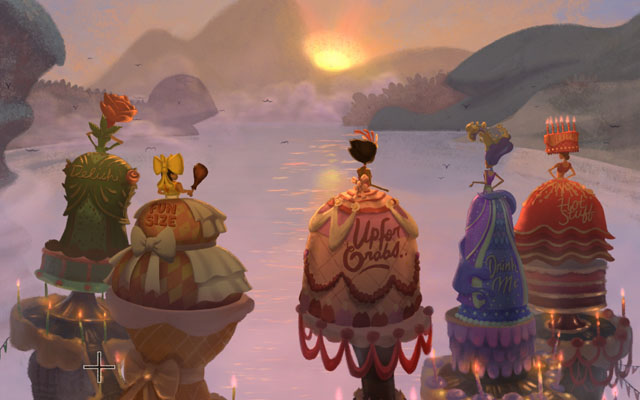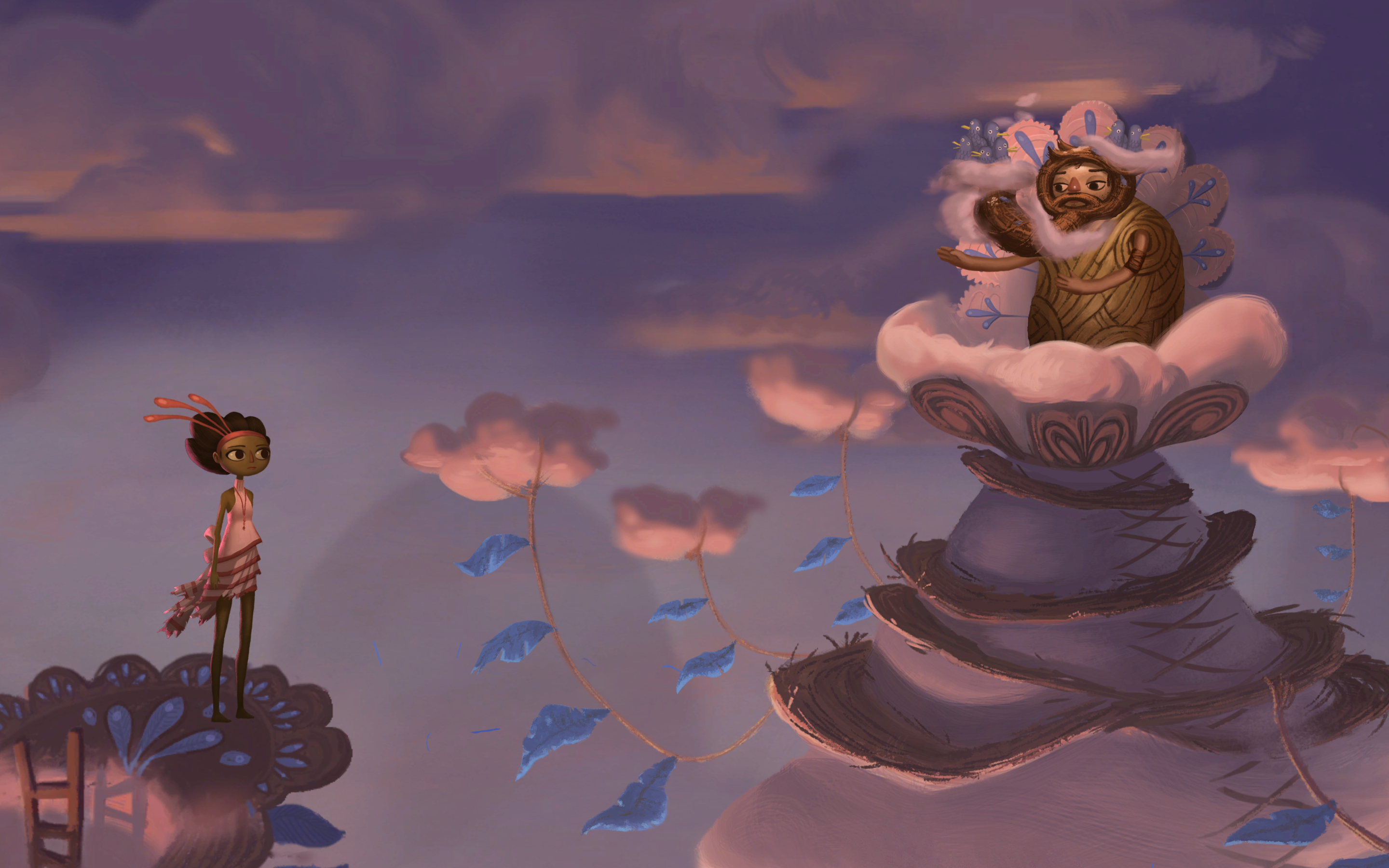I played the game Broken Age, designed by Tim Schaefer and developed by DoubleFine. The game was mentioned in the reading, and the dual narrative was really interesting. I started the game as the female character, who begins the game preparing for her upcoming sacrifice to Mog Chothra, some sort of alien eldritch creature. Immediately, the concept of agency in games and in feminist stories became obvious, as Vella(the main female character’s) uses her agency to get herself out of being a sacrifice, which is enacted by the player solving the object -environment puzzles. The other girls being sacrificed, lacking this agency, are eaten by the monster.

Although, in the midst of this feminist arc of agency and protesting against exploitative traditions, there is a troubling aspect to this narrative. All of the girls with Vella are happy to be eaten by the creature – they think that Vella is crazy for wanting to get out. This is meant to show that Vella has a unique worldview relative to the people around her, something about it felt not right. Vella is the cool girl who’s gonna fight the monster, but the other girls are happy to lie back and be eaten. All the women Vella meet are completely complacent, and moreover, catty towards her. It felt like a caricature of mean girls from a 2000’s movie about why high school sucks. This sets up Vella as a strong female character, a oppression-defying icon, but in doing so, unnecessarily degrades all of the other female characters as easily brainwashed and too meek to incite change. It came across as a sort of “not like other girls” approach to a female protagonist, which is all too familiar and in my opinion, not very feminist. Though it does serve the narrative of questioning the norms in flawed societies, the way in which this was done felt strangely unprogressive.

Not that the game doesn’t have male characters who also refuse to stand up to oppressors – but these male characters exhibit this attitude differently- they are still more controlling of the situation at hand, less hysterical. However, as I played on, I found a few female characters who didn’t fall into the same category as the ones from this previous environment (and a few who did, unfortunately), which made me feel a little more confident in the feminism of this game. Luckily, Vella as a character doesn’t put down other women, though the narrative does.

Speaking of the narrative, the game does appear to fit the idea of a “nonproductive” narrative. There is this idea that at some point, you might fight Mog Chothra, but the present of the game is much more slow-paced and episodic. The stakes are not very high or in your face – it feels like you can take it at your own pace. A lot of the reviews I saw while deciding whether or not I would play this game called it a “casual” adventure, which does reflect how the game feels, though that language does have some connotations that might indicate people feel it’s not a very “serious” or “real” game by certain standards.
Overall, Broken Age was a mix of clearly feminist storytelling and embodied many aspects of feminist gaming through agency and nonproductive narratives; it does give itself away as somewhat dated and somewhat less progressive with its treatment of female subjects.


